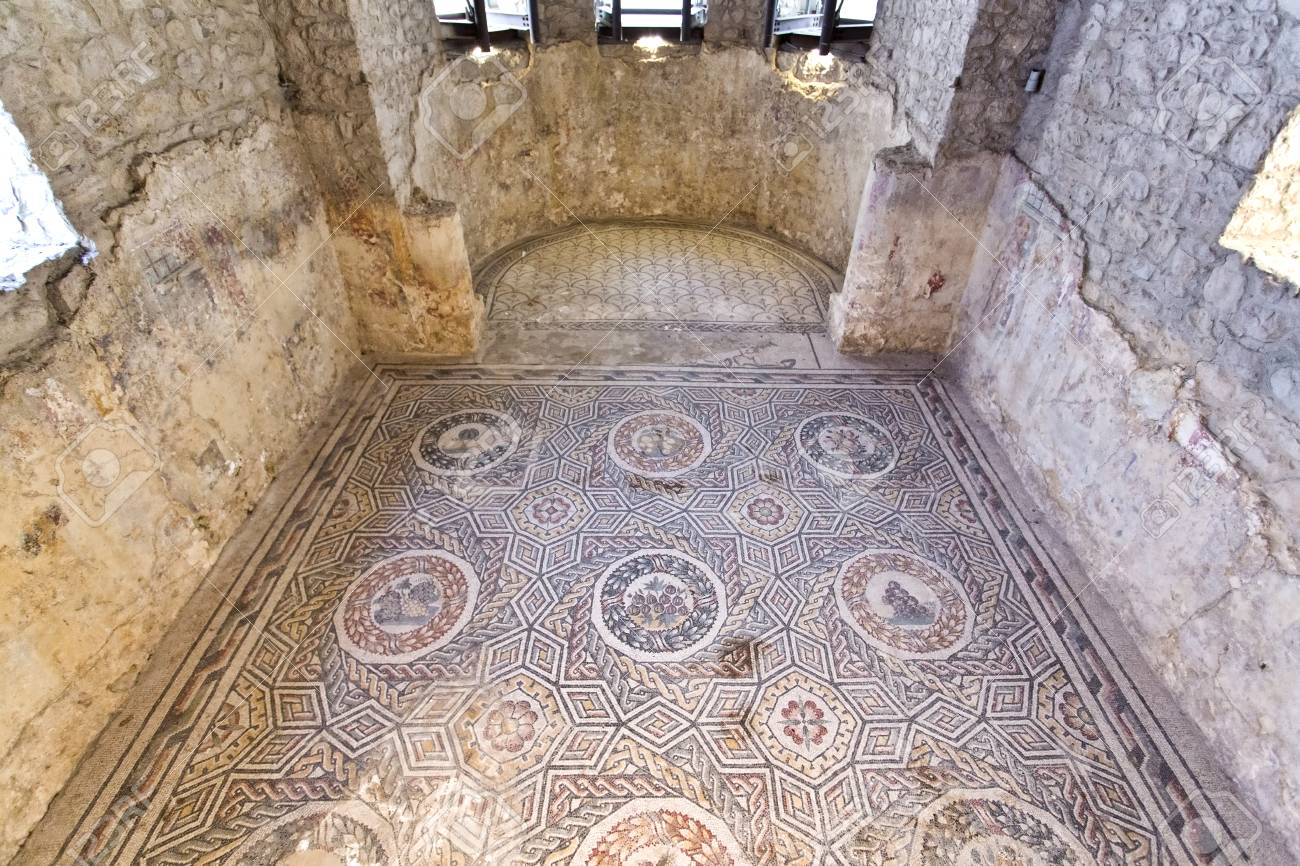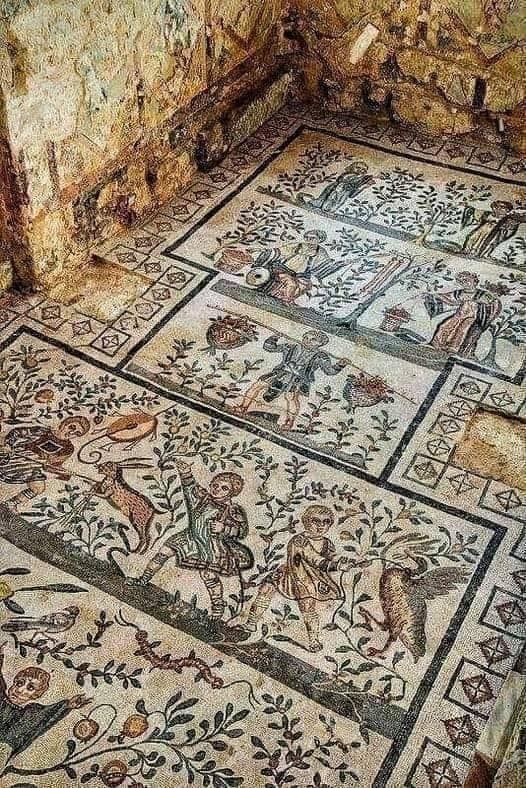Magnificent Roman floor mosaic of the Villa Romana del casale in Piazza Armerina, Sicily, Italy.


**The Magnificent Roman Floor Mosaic of the Villa Romana del Casale**
Nestled in the heart of Sicily, near the town of Piazza Armerina, lies one of the most exquisite examples of Roman artistry and opulence: the Villa Romana del Casale. This ancient Roman villa, dating back to the 4th century AD, is renowned for its magnificent floor mosaics, which offer a vivid glimpse into the life, culture, and aesthetics of the Roman Empire.
The Villa Romana del Casale was a luxurious rural estate, likely owned by a high-ranking Roman official or aristocrat. Its sprawling complex included numerous rooms, courtyards, and baths, each adorned with intricate mosaics that showcased the wealth and artistic sensibilities of its owner. These mosaics, remarkably well-preserved, cover an area of over 3,500 square meters, making them one of the largest and most complex collections of Roman mosaics in the world.
The mosaics of the villa are a testament to the extraordinary skill of Roman artisans. Created using millions of tiny colored stones called tesserae, the mosaics depict a wide array of scenes ranging from mythological narratives and hunting expeditions to daily life and nature. Each mosaic tells a story, brought to life with vibrant colors, dynamic compositions, and meticulous attention to detail.

One of the most famous mosaics in the villa is the “Great Hunt,” which spans an entire corridor. This expansive scene portrays a lively and dramatic hunt, with hunters on horseback and foot pursuing a variety of wild animals, including lions, tigers, and elephants. The mosaic captures the excitement and danger of the hunt, illustrating the Romans’ fascination with nature and their mastery over it. The dynamic movement and intricate details of the animals and hunters create a sense of realism and immediacy that is truly captivating.
Another notable mosaic is the “Bikini Girls,” found in the room known as the Chamber of the Ten Maidens. This mosaic depicts young women engaging in athletic activities such as weightlifting, running, and playing with a ball. The detailed rendering of their attire, which resembles modern bikinis, and their athletic poses highlight the Romans’ appreciation for physical fitness and the beauty of the human form.
The villa also features mosaics with mythological themes, such as the depiction of Hercules and the Labors, showcasing the hero’s feats and strength, and scenes from the life of the god Orpheus, illustrating his enchanting musical abilities that could tame even the wildest of beasts.
Beyond their aesthetic beauty, these mosaics provide invaluable insights into Roman life and culture. They reflect the values, interests, and daily activities of the Roman elite, as well as their interactions with the natural world and their fascination with mythology and athleticism. The mosaics also reveal the sophisticated techniques and artistic traditions of Roman mosaicists, who were able to create lifelike and expressive images using small, fragmented pieces of stone.
Today, the Villa Romana del Casale is a UNESCO World Heritage Site, attracting scholars, historians, and tourists from around the globe. The preservation of the mosaics allows visitors to step back in time and experience the grandeur and elegance of Roman civilization. Walking through the halls of the villa, one can almost hear the echoes of the past and feel the presence of those who once inhabited this magnificent estate.
The floor mosaics of the Villa Romana del Casale stand as a lasting legacy of Roman artistry, ingenuity, and cultural richness. They are a window into a bygone era, offering a stunning visual narrative that continues to inspire awe and admiration.